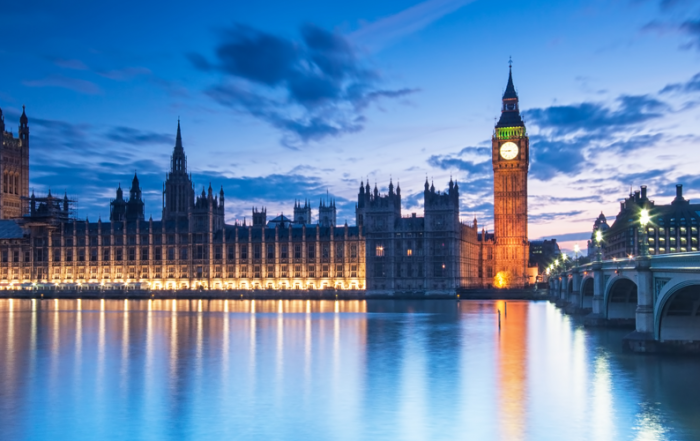Delivering flexibility for free and fair elections
The right to vote in a free and fair election is considered one of the cornerstone rights of democracy – a hard-won, lengthy fight for certain groups of society to achieve equality in voting rights. Yet, despite the efforts to achieve this right, the issue of voter turnout in UK elections has been a challenge that has plagued the government for years – particularly since voter turnout peaked at 84% in 1950 and has been steadily declining ever since.
There are a number of elements to consider that contribute to this challenge in recent years; voter fatigue, disillusionment with the political system, a sense of futility among many. Low voter engagement can appear to undermine the legitimacy of the elected party by representing a skewed proportion of society, potentially fuelling further distrust of the political system for certain groups.
But in addition to addressing and improving meaningful and effective communication with a disengaged electorate, there are just as many practical hurdles that can have a significant impact on voter turnout. William Quinton, head of elections sales at Idox, explains how current efforts to modernise the voting system and encourage greater turnout at the polls through a more flexible approach to voting, with the support of technology, could help bring the ballot box closer to home.
Voter engagement
While voter turnout across all elections is lower than desired, turnout in local council elections is consistently lower than general elections, typically not exceeding 35% for elections held outside of general election years. For example, turnout at the 2019 general election was 67.3% across the UK, a decrease of 1.5% compared to 2017. Yet just a third (34.6%) of the population used their ballot in the 2018 local elections.
When you take age demographics into account, it’s clear that the older population are far more likely to vote. Voter turnout in 2019 was just 47% amongst the 18-24 age group, compared to 74% for those aged over 65. Historically, it could be argued that younger people have been less interested in politics, but in recent years the rate of younger generations engaging in government issues has greatly increased. The ‘youthquake’ of the 2017 election that underpinned a strong performance for the Labour party among younger voters was only built upon in the 2019 election as the upwards trend continued, but youth turnout still remains far lower than for older demographics.
Younger people are becoming increasingly more politicised for a number of reasons, not least due to the influence of the internet, social media and the 24/7 news cycle – they are better educated and have far more sources of information to consider than ever before, making engagement with current affairs easier. Social media has provided everyone with a voice and platform to stimulate debate across the topics of their choosing – the deepening climate crisis, for example. Yet, these increasing levels of topical engagement aren’t correlating with the anticipated rise in votes.
Youth voter registration
Younger people are missing from the electoral register in greater proportions compared to older voters and owner-households. With the younger population typically moving house more often, frequently working at more than one job, juggling education – registering to vote isn’t high on the priority list. In 2021, 16 and 17 year olds were able to vote in the Senedd (Welsh Parliament) election for the first time, yet 54% of young people failed to register to vote in time.
Ideas have been mooted around automatically adding eligible citizens to the electoral register by integrating national and local datasets, such as the NHS, DVLA and welfare records. Additionally, there is currently no simple way to check if you are already registered – addressing these simple factors could help overstretched electoral registration officers dealing with unnecessary duplicate registrations.
But even overcoming these concerns doesn’t take into account the current inflexibilities of our voting system on polling day.
Flaws in the current model
Early voting in the US elections in November 2021 saw record numbers of voters casting their ballots ahead of election day. As of 18 October, more than 29 million had voted early, either in person or by mail, according to the US Election Project – rising to 99 million by 2 November. At the same point in the 2016 race, about 6 million votes had been cast. The influence of COVID-19 and restrictions such as social distancing played a part in more people choosing to vote early and away from the queues of polling stations. So, if this flexibility meant that more people could cast their vote, why limit these policies to exceptional times?
More flexibility and convenience for the public means that secure and reliable technology is vital to ensure people vote once and in the correct poll. Idox is currently working in collaboration with a number of its Welsh local authority customers together with the Welsh Government on four flexible voting pilot schemes, ahead of the Welsh local government elections on 5 May 2022 – the first local government elections in Wales in which 16 and 17-year-olds can take part.
These pilots provide methods for advanced and centralised voting, as well as a school polling station for eligible pupils. The pilots are designed to allow people to cast their vote at a time and place that is convenient for their needs, and the results of these pilots will influence decisions around enabling flexibility in future elections.
Summary of the pilots:
- Coleg Gwent’s Blaenau Gwent Learning Zone in Ebbw Vale will be used as an early polling station for students in the week leading to election day. It will also be available as an early voting centre for all residents of the county, no matter which electoral ward they live in
- In Bridgend, a new polling station will be created in a school for eligible pupils to cast their votes there in advance of election day. Existing polling stations in wards that have had lower turnout will also be open for early voting in the week ahead of the election
- In Caerphilly and Torfaen, council offices will be used as early voting centres on the weekend before election day. They will be open to all residents of the county, no matter which electoral ward they live in, providing a convenient town centre location in which to vote
- The pilots in Blaenau Gwent, Caerphilly and Torfaen will also mean people from anywhere in the county will be able to vote at a central polling station, not just one in their ward, offering flexibility over location as well as timing
The Welsh government’s senior legal advisor, Counsel General Mick Antoniw, said the administration wanted to make it as simple as possible to vote:
“Democracy should be a part of all our lives and if more of us take part, it will lead to better policy making by elected representatives and policies which truly represent the views and experiences of all of us. These voting pilots will help us to better understand how we can increase turnout. We believe making voting more flexible and easier will bring democracy closer to everyone.”
Delivering transparent, fair and accessible elections is a complicated and administratively complex operation – an Electoral Management System (EMS) provides the foundations of a smooth and efficiently run election. Making elections more accessible and convenient for the public means that security and reliability must be prioritised more than ever, to protect the democratic process and our right to free and fair elections.
As part of the Welsh pilots, Idox’s EMS has been adapted to enable the setup and staffing of early voting centres; allow the definition of ballot paper ranges for early voting centres and ballot book requirement calculations in pilot areas; enable the production of stationery with a fall-back paper register and corresponding number lists; and interface with polling station tablet apps used to ensure voters cannot cast their vote more than once.
Through the use of streamlined and innovative technology, the entire elections process can become more efficient, flexible and trusted for both electoral administrators and the voters themselves.
Catalyst for more voting flexibility
The recent passing of the Elections Bill means that there will be a number of changes to the elections process over the coming years. While specific details still need to be decided, one of the issues it was designed to tackle is voter fraud, which has sparked much debate. Some argue this amendment will strengthen the security of elections while critics contend it goes against flexibility in the system. While certain reforms may reduce the administrative complexities of elections, continued challenges when it comes to limited resources and multiple voting systems will continue to impact electoral services and subsequent voter engagement.
It’s encouraging to see a continuing upward trend of younger voters casting their ballots, especially with the voting age being lowered in Wales, but there is still a long way to go. As the population is faced with new and evolving challenges, such as the cost-of-living crisis, the climate emergency and the devastating conflict in Ukraine, it’s only natural that people will want to have their say about how these situations are handled. To encourage as much turnout as possible, combined with improving meaningful and effective communication with the entire electorate, a more flexible elections process can only be a positive element to help reduce the barriers to voting.
The flexible voting pilots in Wales could be the catalyst for improved flexibility in future UK elections and the start of improved voter turnout at the polls.



